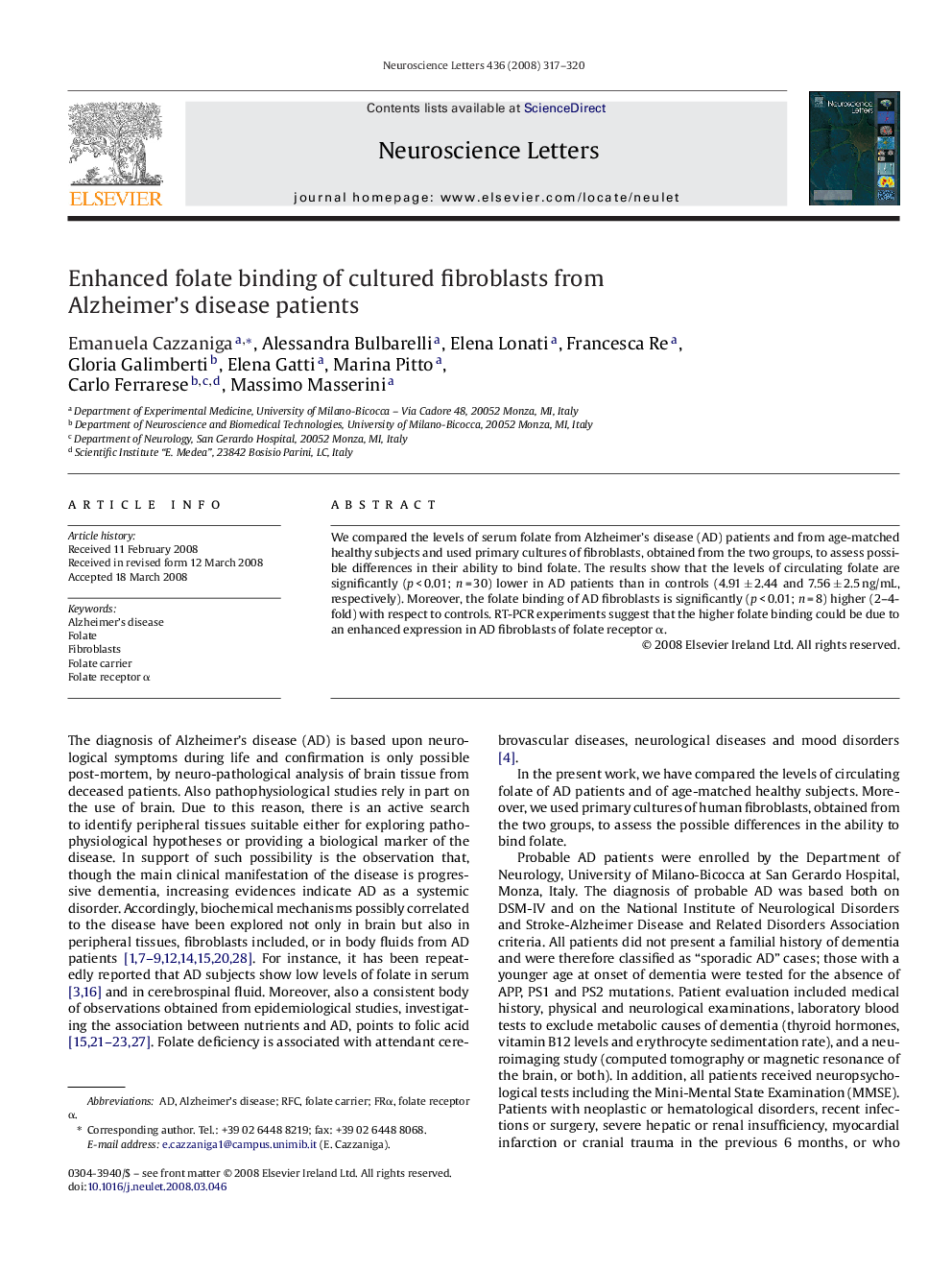| Article ID | Journal | Published Year | Pages | File Type |
|---|---|---|---|---|
| 4348706 | Neuroscience Letters | 2008 | 4 Pages |
Abstract
We compared the levels of serum folate from Alzheimer's disease (AD) patients and from age-matched healthy subjects and used primary cultures of fibroblasts, obtained from the two groups, to assess possible differences in their ability to bind folate. The results show that the levels of circulating folate are significantly (p < 0.01; n = 30) lower in AD patients than in controls (4.91 ± 2.44 and 7.56 ± 2.5 ng/mL, respectively). Moreover, the folate binding of AD fibroblasts is significantly (p < 0.01; n = 8) higher (2–4-fold) with respect to controls. RT-PCR experiments suggest that the higher folate binding could be due to an enhanced expression in AD fibroblasts of folate receptor α.
Related Topics
Life Sciences
Neuroscience
Neuroscience (General)
Authors
Emanuela Cazzaniga, Alessandra Bulbarelli, Elena Lonati, Francesca Re, Gloria Galimberti, Elena Gatti, Marina Pitto, Carlo Ferrarese, Massimo Masserini,
